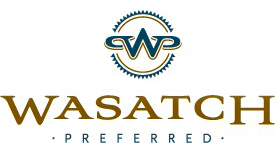Homes and Townhomes Insurance

Few things in life are more difficult than suddenly being displaced, so protect your family home and belongings with a homeowner’s insurance policy that will rebuild your home, replace your personal items, and give you additional money for expenses you hadn’t planned on.
The dollar amounts for each coverage described below are examples only. Your insurance policy will be tailored to your coverage needs.
Dwelling, Coverage A – Your home
$800,000. This part of your policy pays for the repair or replacement of your residence for damage caused by a covered loss. Most homeowner policies pay for all causes of loss unless specifically excluded in the policy. Earthquake and Flood are not part of a homeowner’s policy and must be added for coverage to apply (more information about earthquake and flood coverage below). Other coverages can also be easily endorsed to a homeowner’s policy such as Backup of Sewer and Drains, Water Seepage, and Identity Theft Protection. (Other Structures, Personal Property Coverage, and sometimes Additional Living Expense are typically calculated as a percentage of the Dwelling coverage, at 10%, 70%, and 30%, respectively).
Other Structures, Coverage B – Other structures
$80,000. Other Structures are man-made structures on your premises that are not part of your residence, such as fences, walls, sheds, gazebos and sport courts. Other Structures are usually covered at 10% of the Dwelling amount.
Personal Property, Coverage C – Your belongings
$560,000. This pays for the contents you own in your home which includes your clothing, electronics, furnishings, and other belongings that aren’t permanently affixed to your house. Make certain to have Replacement Coverage on your contents, rather Actual Cash Value (ACV). Replacement Coverage repairs or replaces the item with like kind and quality, whereas ACV gives you only the depreciated value for your items. Personal Property coverage is typically covered at 70% of the Dwelling amount.
Additional Living Expense, Coverage D – Money to keep you going
$240,000 or 12 months. This coverage pays for additional expenses you incur when you are displaced after a covered loss for housing, food, and transportation, to name a few. For example, eating more meals in restaurants rather than at home, having clothing items taken to the cleaners, and possibly driving further to work each day could significantly increase your monthly cash flow. Policies vary widely on the amount allotted from 10% to 30% of Dwelling Coverage A, to a-period-of-time, rather than a
dollar amount.
Personal Liability, Coverage E – Protect your net worth from lawsuits
$500,000. Liability coverage on your home, as with your auto and other insurance policies, pays for the other party’s medical expenses, but it’s also designed to protect your net worth (assets – debt =net worth) in a lawsuit, so it’s important to have enough coverage and a good idea to keep Liability Limits relatively consistent between policies. Lawsuits can occur from dog bites, to slip and fall injuries, and many other causes. If your net worth is substantial, consider adding a Personal Umbrella Policy of
$1,000,000 to $10,000,000, or more, depending on your need, that will extend the policy limits on all your underlying policies—auto, home, boat, etc.
Guest Medical Payments, Coverage F – For other’s minor injuries
$5,000. This part of your policy covers the medical expenses of others if they are injured on your property. It differs from Liability coverage in that unlike Liability, Medical Payments (sometimes called Guest Medical) it doesn’t involve a lawsuit.
Scheduled Personal Property, (SPP) – Your valuable keepsakes
$50,000. Personal Property (Coverage C) listed above covers the contents of your home, but certain items have coverage limits unless they are Scheduled on your policy. Some belongings such as jewelry, watches, furs, silverware, firearms, and other items can be Scheduled to increase protection in three ways. First, it allows you to insure each item for its full value rather than for only the sublimit shown on the policy. Second, Scheduling an item eliminates the deductible, whereas Unscheduled items are subject to your home insurance deductible. Third, Scheduling broadens the coverage to include “mysterious disappearance” meaning you may not know how an item came to be missing. For example, diamonds fall out of rings and watches get misplaced, but under your Personal Property (Coverage C) there must be a known cause of loss, however, Scheduled items have broader coverage.
Earthquake Coverage
10%. Homeowner’s policies protect against most losses, but unless earthquake coverage is added to your policy, there is no coverage for earthquake damage. The cost of earthquake insurance varies widely by state and is often endorsed onto your homeowner’s policy, so if you have a mortgage it will all be handled through your escrow account. Earthquake policies usually come with deductibles of 10% – 20% of your dwelling (Coverage A on your policy), so if your home is insured for $800,000, you’ll have a deductible of $80,000 to $160,000. Although that’s a significant amount of money, your home will be rebuilt, your belongings will be replaced, and in some cases, other structures on your property will be rebuilt. Aftershocks are considered all part of the quake for 3 to 7 days, depending on the insurance company.
Government Assistance
Unlike insurance, government assistance programs are design to help you get partly back on your feet, not replace what you’ve lost. For aid to be available from the federal government, the president must determine the damage is severe enough and widespread enough to declare the area a disaster. Then, the Federal Emergency Management Agency (FEMA) can begin allocating aid and the Small Business Administration (SBA) and others can offer low-interest loans to those who qualify. Many people can’t qualify for a sizable loan in addition to their mortgage, but those who can, should be aware that the government enforces maximum limits, which may be far less than the amount needed to rebuild your home. Those who don’t qualify for a loan can apply for a small grant from FEMA for repairs or assistance for additional living expenses. The maximum grant allowed through FEMA is a fraction of the loans offered. Like most things in life, it’s better to plan ahead rather than hope for a bailout later. Wasatch Preferred recommends each client evaluate their financial ability to recover from a disaster when it happens and choose the best course of action for their circumstances. One caveat as you evaluate—be realistic, don’t minimize the risk or ignore it. Consider carefully what an earthquake disaster would do to your net worth, your retirement plans and your overall financially stability. A relatively small premium now may be a much better option than shouldering the entire loss yourself later. For more information, please contact us by phone 801-676-7101, or through our website, www.thinkpreferred.com.
Get the Right Coverage
Your home may be your most important asset, and we can help protect it. For all home insurance, including flood coverage, we’re here to help!
